Related Research Articles
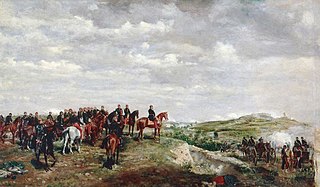
The Second Italian War of Independence, also called the Franco-Austrian War, the Sardinian War, the Austro-Sardinian War or Italian War of 1859, was fought by the Second French Empire and the Savoyard Kingdom of Sardinia against the Austrian Empire in 1859 and played a crucial part in the process of Italian Unification.
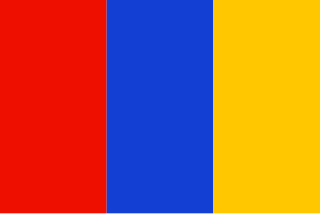
The Republic of Alba was a revolutionary municipality proclaimed on 26 April 1796, in Alba, Piedmont, when the town was taken by the French army. The municipality had a very short life of only 2 days because, with the Armistice of Cherasco on 28 April 1796, King Victor Amadeus III of Sardinia was given back the civil control of all Piedmont.

The Diocese of Pinerolo is a Latin diocese of the Catholic Church in the administrative province of Turin of Piedmont region, Northwestern Italy. It is a suffragan of the Metropolitan archbishopric of Turin.

The Diocese of Alba Pompeia or Alba Pompea is a Latin Church ecclesiastical territory or diocese of the Catholic Church in Italy. Its territory comprises eighty towns in the civil Province of Cuneo and two in the Province of Asti.

The Second Battle of Dego was fought on 14 and 15 April 1796 during the French Revolutionary Wars between French forces and Austro-Sardinian forces. The battle was fought near Dego, a hamlet in northwestern Italy, and ended in a French victory.
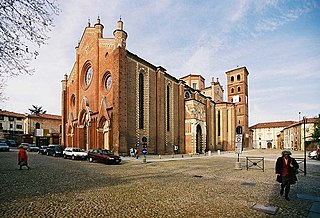
The Diocese of Asti is a Latin diocese of the Catholic Church in Piedmont, northern Italy, centered in the city of Asti. It has been a suffragan of the Archdiocese of Turin since 1515. Previous to that, it was a suffragan of the Archdiocese of Milan.

The Diocese of Biella is a Latin diocese of the Catholic Church in northern Italy, in the Piedmont region. The diocese was established in 1772. It is a suffragan of the Archdiocese of Vercelli. Biella is a city in Piedmont, 42km northwest of Vercelli.
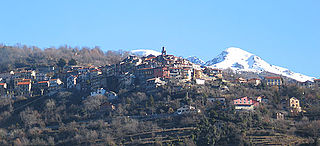
Belvédère is a commune in the Vésubie valley north of Nice in the Alpes-Maritimes department in southeastern France. The village of Belvédère is located at the entrance of the Gordolasque valley on the edge of the Mercantour National Park.

The Diocese of Fossano is a Latin diocese of the Catholic Church in Piedmont, in the Province of Cuneo. It is a suffragan of the Archdiocese of Turin.

The Diocese of Susa is a Latin diocese of the Catholic Church in Piedmont (Italy) that was established in 1772. It is a suffragan of the archdiocese of Turin. The diocese and the city of Susa lie on the main route that leads to Italy from the Mont Cenis Pass and the Col de Montgenèvre.
In the Battle of Ceva on 16 April 1796, troops of the First French Republic under Pierre Augereau fought against part of the army of the Kingdom of Sardinia-Piedmont led by General Giuseppe Felice, Count Vital. Augereau assaulted the strong defensive position without success. At the direction of the Sardinian army commander, Feldmarschal-Leutnant Michelangelo Colli, Vital withdrew on the 17th in order to avoid being trapped by a second French division.

Filippo Paulucci delle Roncole, also known as Filipp Osipovich Pauluchchi, was an Italian marquis and army officer, later a general at the services of the Kingdom of Sardinia, the Holy Roman Empire, the Kingdom of Italy, and the Russian Empire.

The Second Battle of Saorgio was fought from 24 to 28 April 1794 between a French First Republic army commanded by Pierre Jadart Dumerbion and the armies of the Kingdom of Sardinia-Piedmont and the Habsburg monarchy led by Joseph Nikolaus De Vins. It was part of a successful French offensive designed to capture strategic positions in the Maritime Alps and Ligurian Alps, and on the Mediterranean coast. Tactical control of the battle was exercised by André Masséna for the French and Michelangelo Alessandro Colli-Marchi for the Coalition. Saorge is located in France, about 70 kilometres (43 mi) northeast of Nice. At the time of the battle, the town was named Saorgio and belonged to Piedmont.

Benedetto Innocenzo Alfieri was an Italian architect, a representative of the late-Baroque or Rococo style.
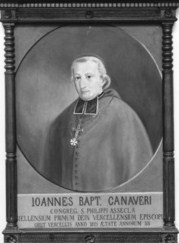
Giovanni Battista Canaveri (1753-1811) was an Italian nobleman, Bishop of Biella and Vercelli, first Aumônier of Madame Letizia. He was appointed as Baron of the French Empire in February 1808.

The Piedmontese Republic was a revolutionary, provisional and internationally unrecognized government established in Turin between 1798 and 1799 on the territory of Piedmont during its military rule by the French First Republic.

The flag of Piedmont is one of the official symbols of the region of Piedmont in Italy. The current flag was adopted on 24 November 1995.

The Regiment "Nizza Cavalleria" (1st) is a cavalry unit of the Italian Army based in Bellinzago Novarese in Piedmont. The regiment is the reconnaissance unit of the Alpine Brigade "Taurinense".

The Regiment "Savoia Cavalleria" (3rd) is a cavalry unit of the Italian Army based in Grosseto in Tuscany. The regiment is the reconnaissance unit of the Paratroopers Brigade "Folgore".

Jean-Gaspard Dichat de Toisinge became a general officer in the service of the Kingdom of Sardinia-Piedmont during the War of the First Coalition. Born in the Duchy of Savoy into a distinguished family, he entered the Sardinian army in 1759 and advanced in rank in the peacetime army. After the outbreak of war, he was promoted to lieutenant colonel of the Aosta Infantry Regiment in 1793. That year he became commander of a provisional regiment of grenadiers. In early 1796 he was promoted colonel and later led a division. After another promotion to general officer, he fought against Napoleon Bonaparte's French army at the battles of San Michele and Mondovì and was killed in the latter action.
References
- Massabò, I. Ricci (1973), "Cacherano d'Osasco, Giovanni Pietro Luigi", Dizionario Biografico degli Italiani , vol. 16, Rome: Istituto della Enciclopedia italiana
- Pinell, Ferdinando Augusto (1856), Piemont's Militair-geschichte vom Frieden von Aachen bis auf unsere Tage, O. Wigand, p. 324 (last ¶)]
- Schom, Alan (1992), One hundred days: Napoleon's road to Waterloo, New York: Maxwell Macmillan International, p. 19, ISBN 0-689-12097-4
- Société d'etudes scientifiques et archéologiques de Draquignan et du Var (1938), Société d'etudes scientifiques et archéologiques de Draquignan et du Var (in French), vol. 42 pt. 1, Draguignan, France: Imp. C. et A. Latil, p. 146